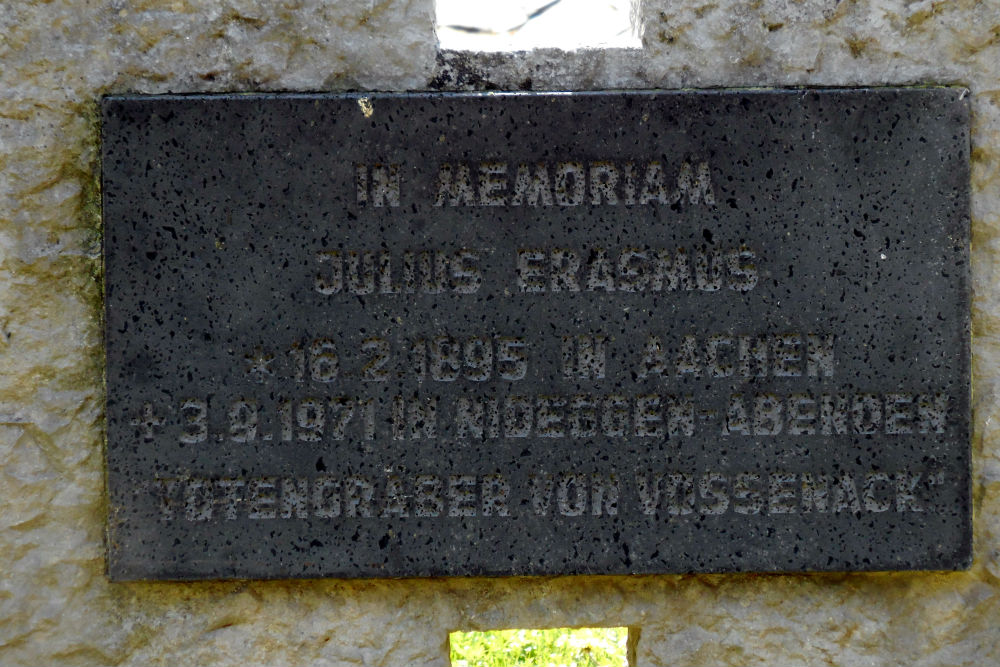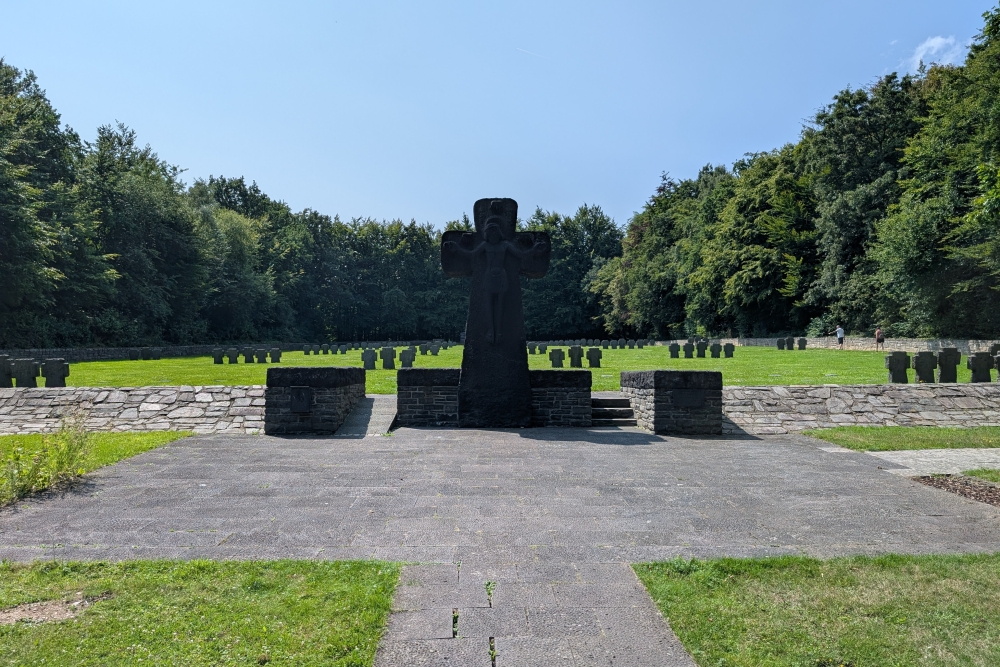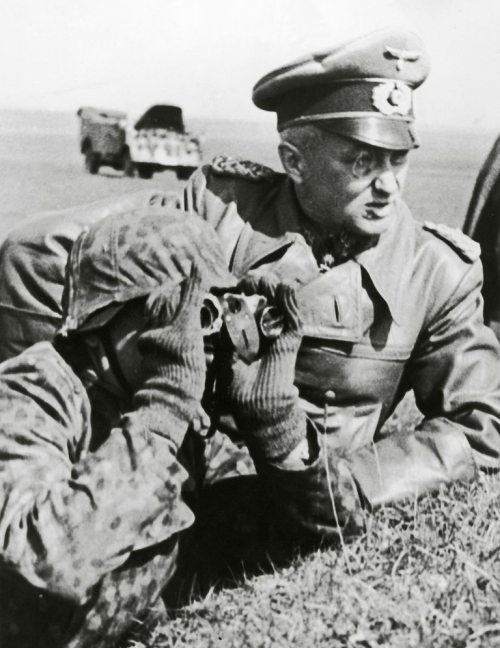Remembrance Stone Julius Erasmus
Julius Erasmus (1895-1971) Vossenack's hero
Julius Erasmus, textile manufacturer in Aachen and Pionierhauptmann during the war, lost his entire family during the Battle of Aachen. After the war, Erasmus left for the Hürtgen Forest where he lived in a hut and identified and buried thousands of dead soldiers who had died in the Hürtgen Forest in the winter of 1944 and 1945. Erasmus simply could not pass up the dead soldiers and saw it as his task to give the deceased a final resting place. Not only was Erasmus not foreign to a great sense of honor, he was also brave. Erasmus decided to go into the woods to search for, take, identify and bury dead soldiers. Corpses lay under trees and ferns and dead soldiers were also lying along roads to nearby villages. In the Hürtgenwald it was dangerous to search because there were still (in 1945 and later) mines and explosives. Several local residents decided to follow Julius Erasmus' initiative and help search, identify and bury the soldiers. About a hundred people lost their lives after the war during searches in parts of the Hürtgen Forest. The mayor of Vossenack (Baptist Linzenich) was killed during search work. Often mines were found with the help of prods. The Germans had laid hundreds of mines during the Battle of Hürtgen Forest. The largest minefield was called 'Wilde Sau' (wild boar) and was located near Hürtgen. If a soldier stepped on a mine (for example the anti-personnel mine S-mine 'Schrapnell Mine'), four or five other mines would explode simultaneously.
In 1944 heavy fighting took place between German and American troops on 'hill 470' (Höhe 470). The Soldatenfriedhof or Ehrenfriedhof Vossenack is now located on that hill. The Soldatenfriedhof Vossenack was inaugurated in 1952 by Federal President Theodor Heuss. Today there are 2,221 soldiers from four countries, most of them German soldiers. The identities of 930 soldiers are unknown.
Erasmus told after the war: "Im Sommer 1945 kam ich nach Vossenack zurück. Ich hatte meine gesamte Habe lost. Der Krieg hatte mir everything enumerated. Und da fand ich sie in the Chausseegräben, am Waldrand, unter zerschossenen Bäumen. Ich konnte sie einfach. nicht da lie sehen, unbestattet und vergessen. Es ließ mir keine Ruhe. " ("In the summer of 1945 I came back to Vossenack, I had lost everything, the war had taken everything I owned. Then I found the corpses of countless German soldiers under the forest edge of destroyed trees. I could not leave them there. , not buried and forgotten. It left me no rest ".)
Julius Erasmus bailed 1,569 soldiers in total. In 1971 he died in Nideggen-Abendenen and was largely forgotten by people. A memorial stone dedicated to Julius Erasmus is on display at the Soldatenfriedhof Vossenack.
Do you have more information about this location? Inform us!
Source
- Text: Ruben Krutzen
- Photos: Henny van Loenen
- Wikimapia
- Volksbund
- worldwartours.be
- Wikipedia
- Warhistoryonline.com
- Museum Hürtgenwald 1944 und im Frieden
- liberationroute.nl
Nearby
Museum
Point of interest
- Small Concrete Building Kall Valley - Simonskall
- Telephone Connecting Point Westwall - Simonskall
- Bullet Marks Stumms Krüzche - Vossenack
Monument
- Monument For Victims Of Expulsion From The East - Hürtgenwald
- Memorial 116 Panzer Division "Windhund" - Vossenack
- Memorial Remy Stollenwerk - Simonskall
Cemetery
- German War Cemetery Vossenack - Vossenack
- German War Cemetery Hürtgen - Hürtgen
- German War Graves Lammersdorf - Lammersdorf
Remembrance Stone
- Stumbling Stone Im Hech 1 - Steckenborn (Simmerath)
- Stumbling Stones Rathausplatz - Simmerath
- Stumbling Stones Kirchweg 9 - Eicherscheid (Simmerath)






